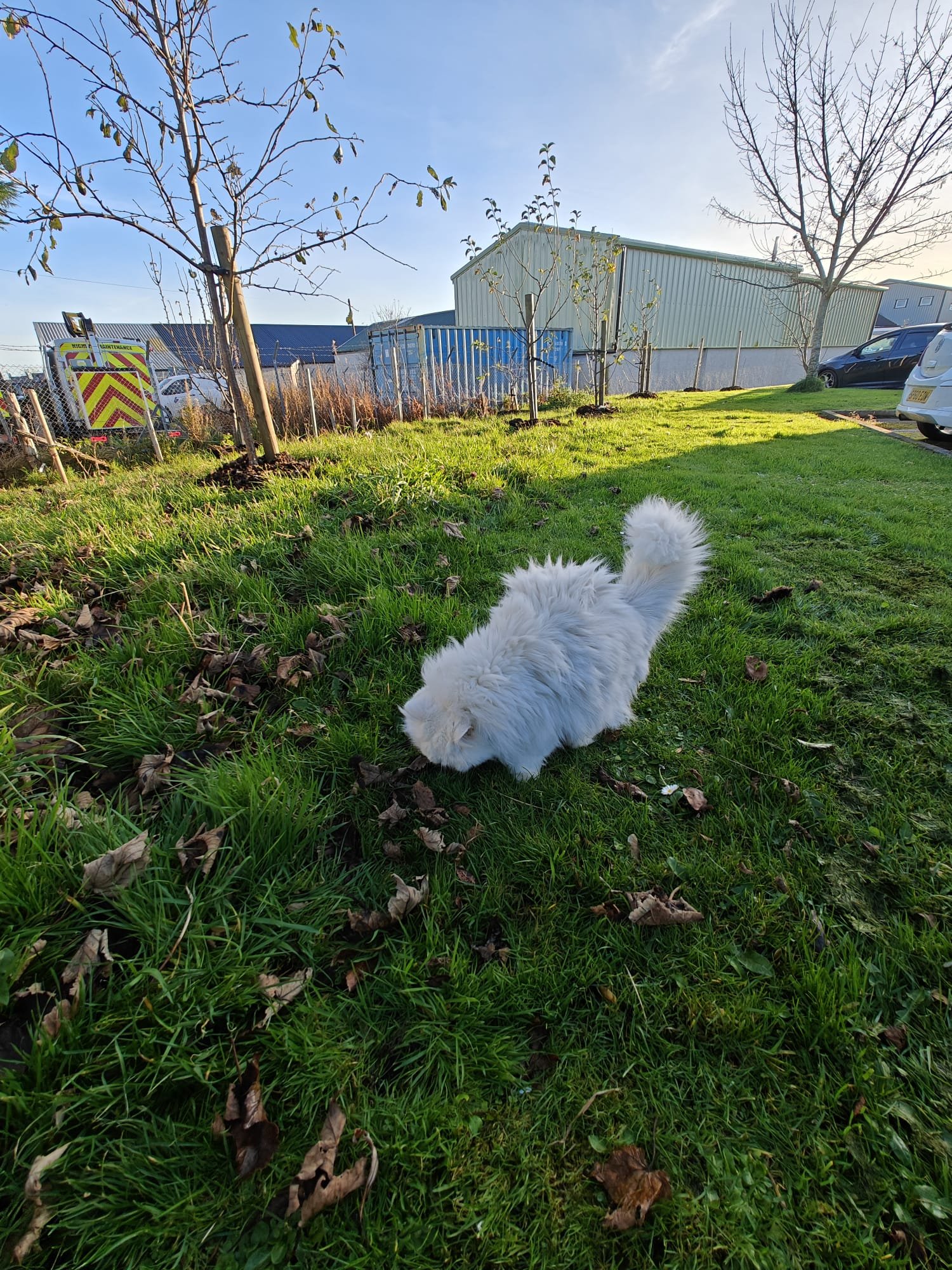In November 2024, together with our amazing team of Thurso Grows Community Gardens and some of their awesome volunteers, we did some work to experiment on using sheep wool as gardening mulch for protecting soil and perennial plants in the raised beds and young trees in the orchard.
At this experimental site, we wanted to explore and demonstrate to our local community how fleece can work as mulch, to improve soil properties and to protect plant roots from cold and wind in winter time.
Our biggest concern was how the wool would stay in place in windy weather (which we have plenty in Thurso), therefore we trialed laying wool in several ways:
simply laying fleeces out
tearing them into flakes
laying fleeces and pinning them to the ground using metal pegs
wrapping fleeces into bobbins and placing them tightly against each other and the walls of the raised bed, to create tension
covering fleeces with netting
We waited to assess the results till March 2025, after the winter was over.
We are delighted to state that in all arrangements wool stayed in place, as can be seen from the before and after photos below. Natural felting kept fleeces compacted and remain in place, withstanding several storms that happened in the winter 2024-2025. Therefore, we can make a conclusion that our conservative ways of laying out the wool with some additional effort to keep it in place were not necessary.
Spreading raw fleeces straight onto the ground gives great results for protecting the soil from winter cold and erosion, improves microbiome of soil and protects perennial plants, it any. In summer time, wool helps with weed control and balancing humidity levels - it soaks excess moisture and gives it away in drier periods. By biodegrading, wool slowly releases nutrients into the soil thus also acting as a fertilizer. If getting your wool directly from the farmer, consider asking for the offcuts of fleeces that remain after skirting. Such part of fleeces will contain sheep poo which will add nutrients to your soil.
Most likely, such parts of the sheep fleece will not cost you anything, or will be very cheap, so you will also get yourself a bargain!
Fleeces simply laid out with no additional protection - Nov 2024 and March 2025.
Fleeces ripped into flakes - Nov 2024 and March 2025.
Fleeces wrapped in bobbins and laid tightly against the bed walls - Nov 2024 and March 2025.
Fleeces protected with netting - Nov 2024 and March 2025.
Another project that we carried out at Thurso Grows Community Gardens was protecting the tree circles with the sheep wool in the orchard.
The tree circles were already mulched with the woodchip, therefore we simply layered the fleeces under the woodchip, or mixed them together without trying too hard.
In this case, the woodchip was used only because it was already in place, and it is always best to use up available resources. Wool just by itself would work too.
Location of the orchard is more exposed to winds than the veg beds, and nevertheless, there was no loss of the wool due to the wind whatsoever, over the winter. All young trees have come out of winter and look strong and happy.
Orchard in November 2024
Orchard in March 2025
















